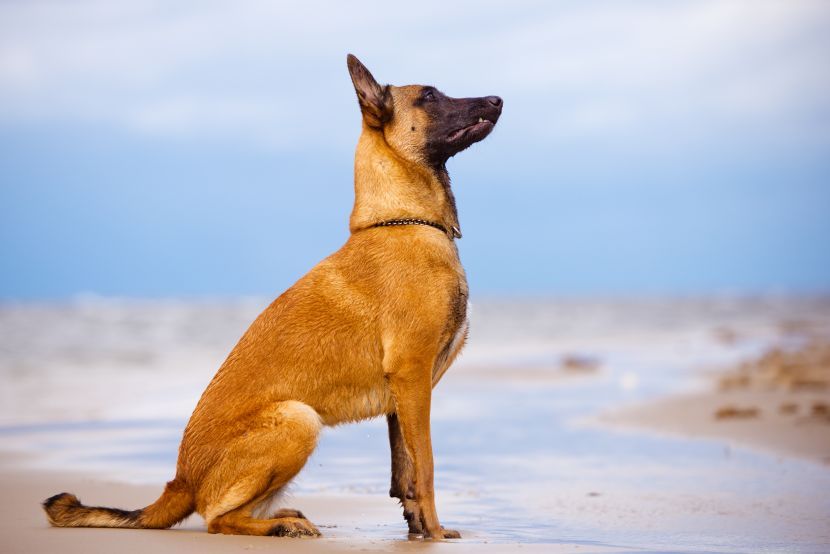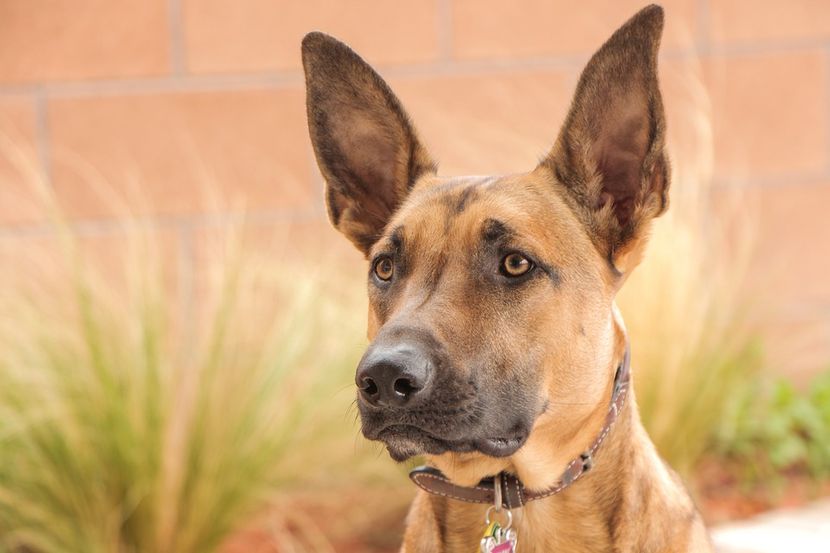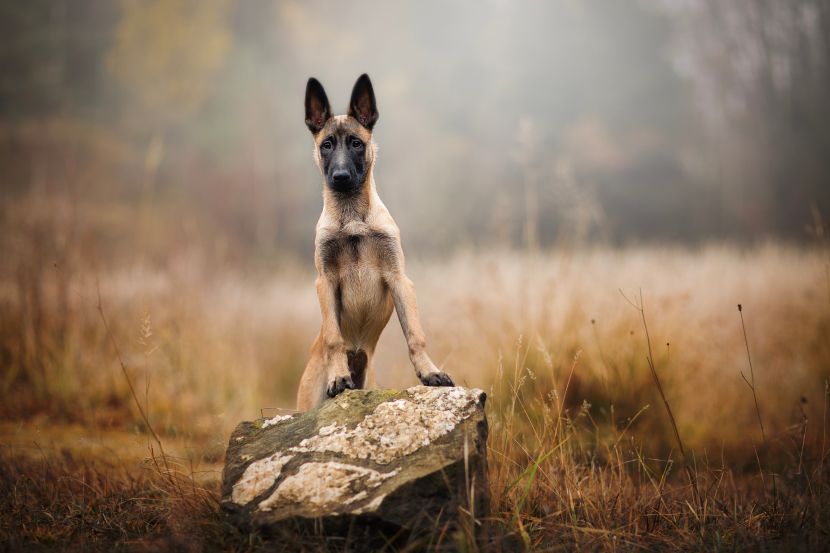
He is not a pet for everyone, although he is intelligent and reserved. No one can erase his protective feeling, so watch out even for your best friend who, although in your company, will always be a stranger to this dog.
The Belgian Malinois (Chien de berger Belge), a breed originating from Belgium, is listed under number 15 in the FCI standard.
It belongs to the first FCI group, which includes shepherd dogs and herding dogs (except Swiss shepherd dogs) and is subject to a work test.
The desired height for males is 62 cm, and for females 58 cm, with a permissible deviation of minus 2 cm or plus four centimeters. Females weigh 20 to 30 kg, males 30 to 35 kilograms.
The Malinois is one of the four varieties of Belgian Shepherds, along with the Tervirene, the Grenandal and the Lakenau.
It can be large or medium-sized, with short hair and a square, well-balanced build. A high-set head is one of the trademarks of the breed.
At the turn of the 21st century, the Malinois "worked" in the police, the army, detected drugs, was a search and rescuer, was hired as a guard of the White House, and was also a member of the team that searched for Osama bin Laden in 2011.
The lifespan of a malinoa is 12 to 14 years.

Historical data and development of the breed
In Belgium at the end of the 19th century there were many herding dogs of different breeds, with various coat varieties. Professor Rel, from the Faculty of Veterinary Medicine in Kirgern, is considered the pioneer of the Malinois breed. The Belgian shepherd was officially recognized between 1891 and 1897. The Belgian Shepherd Dog Association, founded on September 29, 1891, created the first detailed breed standard, allowing only one breed, with three coat varieties.
The Belgian Shepherd was only registered in the pedigree book of the Belgian Cynological Association - the Royal Society of Saint Hubert (LOSH) in 1901. By 1910, the racial characteristics and temperament of the Belgian shepherd were established.
Loyal, diligent, excellent companion
Malinois is a loyal, extremely intelligent and diligent working dog, an excellent companion for an active person. It is used to living in freedom and is able to survive in all climatic conditions.

With an innate ability to work, he is an excellent guardian of home and property. He never backs down from anything, he is stubborn and vigorous and strict protector of his owner. He is alert and cautious, with an investigative nature.
His energy level is very high and he needs a lot of daily mental stimulation and physical activity. He is moderately affectionate and cautious, but creates strong bonds with his owner. Not always a good choice for families with children. Even if you don't have children, train your dog to be calm around the youngest and never let him out of your sight.
Hair and varieties
The mask of the Belgian Shepherd must be unique, with a black area on the upper and lower lips, corner of the mouth and eyelids. When it comes to color, the rules are as follows: Malinois can only be lion-colored with carbonized ends and a black mask. The coat of Belgian Shepherds varies in length, arrangement and structure, but in all varieties it must be rich, dense and of good structure, with an undercoat.
Varieties are long-haired (Grenendal and Tervirene), short-haired (Malinois) and short-haired (Lakenoa). Visible mucous membranes must be highly pigmented.
Activities, training, socialization
Malinois is not a dog for everyone. It is not suitable for living in an apartment, as it requires a lot of space to run and play. It is best for the owner who lives an active life and can give the same to their pet. If you deprive him of physical activity: fast walks, running, playing, he can become depressed and moody.
Proper training and socialization of the Malinois is mandatory and should be carried out during the puppy period. Expose the dog to different people, other animals and situations. Malinois do not always get along with other dogs, but exposure to them, with positive reinforcement in the form of rewards, can help with socialization.
This dog's instinct will make him chase after cars, bicycles and other means of transport, so always keep him on a leash unless he is in a fenced area.

Care, health and nutrition
The Malinois has a short, straight coat with a thick undercoat and needs more than basic grooming. Brush it at least once a week to remove dead hair and prevent tangles. It sheds abundantly in spring and autumn. Also take care of his nails and cut them about once a month, unless he wears them down naturally.
In terms of health, hereditary health problems can occur, most commonly hip and elbow dysplasia and eye problems (progressive retinal atrophy).
Malinois must have access to fresh and clean drinking water. Feed him a high-quality, nutritionally balanced dog food, twice a day. Consult your veterinarian about the variety of food and the amount, because not all dogs are of the same age, energy, size... Combine treats and rewards in quantity with basic meals.
Some people do not differentiate between a German Shepherd and a Belgian Malinois.
Seemingly similar, these two dogs have a different head shape, the Malinois is thinner than the popular "wolf dog" and has shorter hair.


